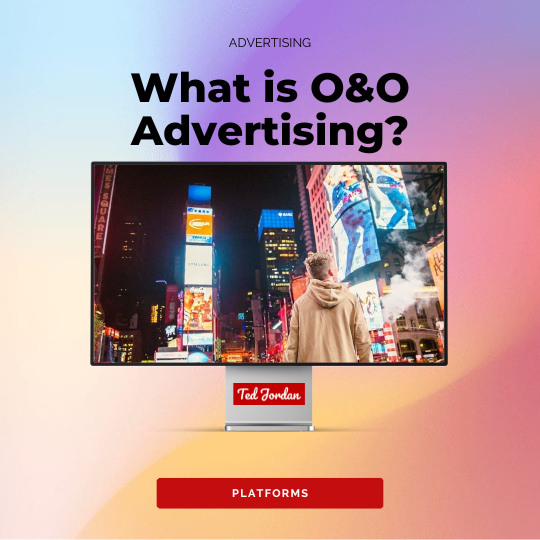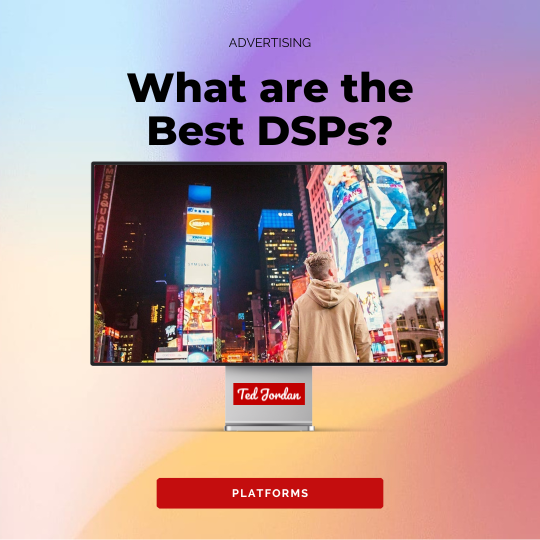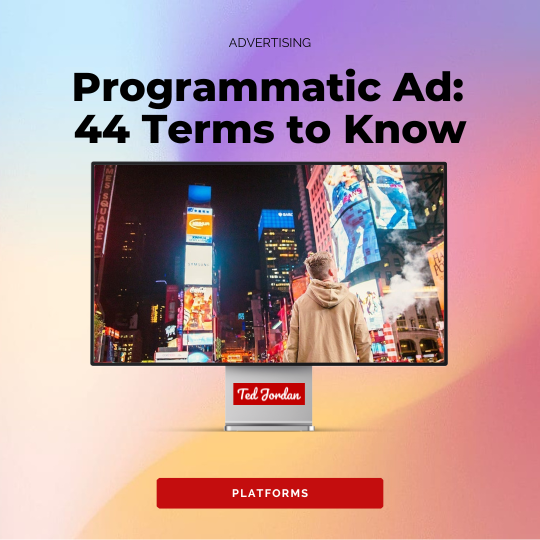With about 72% of Americans primarily shopping in stores, retailers know they could attract more consumers to their stores without too much difficulty. But how can retailers increase foot traffic to their shops or restaurants in a cost-efficient way?
That’s where Drive to Store marketing happens.
Today, learn how Drive to Store ads can help you drive footfall to your store in various ways. Discover the advantages of this advertising method and different strategies to boost store visits and sales.

What is Drive to Store marketing?
Drive to Store, or DTS marketing, is a form of advertising that brings potential customers into a physical store like a restaurant, a cinema or a grocery store. It’s an omnichannel approach used by a large number of retailers over the recent years.
Retailers encourage consumers to visit their stores with the hope they will buy a product or a service. To do so, they can target people around their stores or around their competitors’. Retargeting is also an option.
There are various ways of tracking consumers. Drive to Store campaigns mainly use geolocation, DSK (data is collected through an app), contextual targeting, device ID targeting and DSP data (such as publishers’ data and 3rd party audiences).
About 80% of US adults share their geolocation some of the time, and 16% share it all the time: it’s quite easy for retailers to target a specific audience.
Of course, targeting options must comply with local regulations and laws such as CCPA, or GDPR if you target the European market.
Drive to Store marketing is also great to maintain a connection with an audience, it also increases their loyalty to a brand or to a specific store.
Traceability is crucial in Drive to Store campaigns and footfall attribution plays an important role in campaigns success measurement. Retailers want to know how many customers are coming to their stores after seeing or hearing a Drive to Store ad. They also want to track how much consumers spent when they were in their physical stores.
There are different ways to drive potential customers to your store. We’ll share some examples of Drive to Store strategies just after listing the advantages of DTS advertising…
Drive to Store marketing advantages
Drive to Store campaigns offers several benefits:
- Increases in-store sales.
- Boosts average shopping basket value.
- Increases foot traffic to a physical location.
- Reaches new customers.
- Potentially steals customers from competitors.
- Shows tangible results: visits, purchases, average basket value.
- Creates an immediate need and purchase desire.
- Offers original experiences to consumers: birthday coupons, gifts to collect, free product testing, etc.
- Improves UX thanks to tailored and personalised messages.
- Allows retargeting through different channels.
“64% of consumers want personalised offers from retail brands”
(source: Salesforce)
Drive to Store campaign strategies and examples
Coupons
Paperless coupons are a great way to bring customers to grocery stores and increase their loyalty. Also, customers usually buy more products when they are in a physical store. Knowing they can avail of a discount, they tend to spend even more.
Coupons are often available through cashback apps such as Shopmium, or directly on the supermarkets app, like Walgreens for example.
Retailers can send digital coupons to a targeted audience within a specific distance around the closest shop or to all the clients who did not visit the store for the last 10 days, for example.
Know that coupons can also be sent directly to users phone wallets like Wallet apps (previously known as Apple Wallet on iOS or Google Wallet on Android devices).
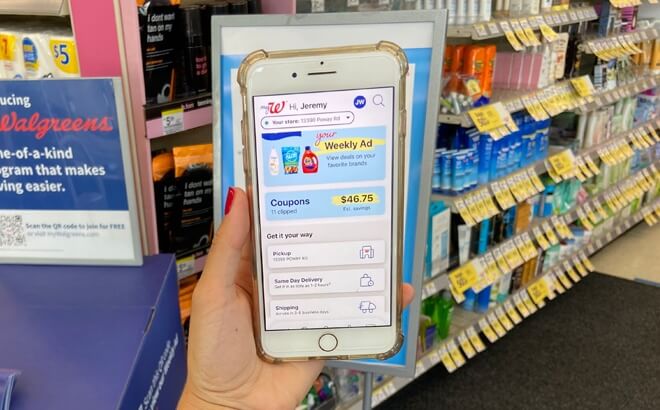
Emails
With “92% of the digital population in the United States […] using e-mails as a form of communication” (source: Statista), emails play an important role in marketing. And so in Drive to Store advertising.
Indeed, vouchers, birthday offers, gifts to collect…, received by emails, lead consumers to visit a store. Who doesn’t want to collect a free chocolate cake from a near store on their birthday?
Retailers can track if this marketing strategy works by sharing unique identifier codes, QR codes or barcodes in their emails. When a customer comes to the store, they will have to scan the code they received or give a unique code (usually created with letters and numbers) to the cashier.

DOOH (Digital Out-Of-Home)
DOOH, or Digital Out-Of-Home, is a great way to drive potential customers to your store.
For example, you can target all the DOOH screens within a certain distance from your store or from your competitors’, using geofencing. Geofencing uses GPS data to create a virtual geographic perimeter.
To drive customers to your store, you could ask them to take a picture of them in front of your ad, for them to receive a discount when they visit your store. Or you could include a QR code on your ad, for them to scan. Add a time limit to increase their will to walk to your restaurant or shop.
Create a fun customer experience to encourage people to visit your store!
You can also add a store locator to help them find your store easily: add walking distance, walking time, address… for better results.
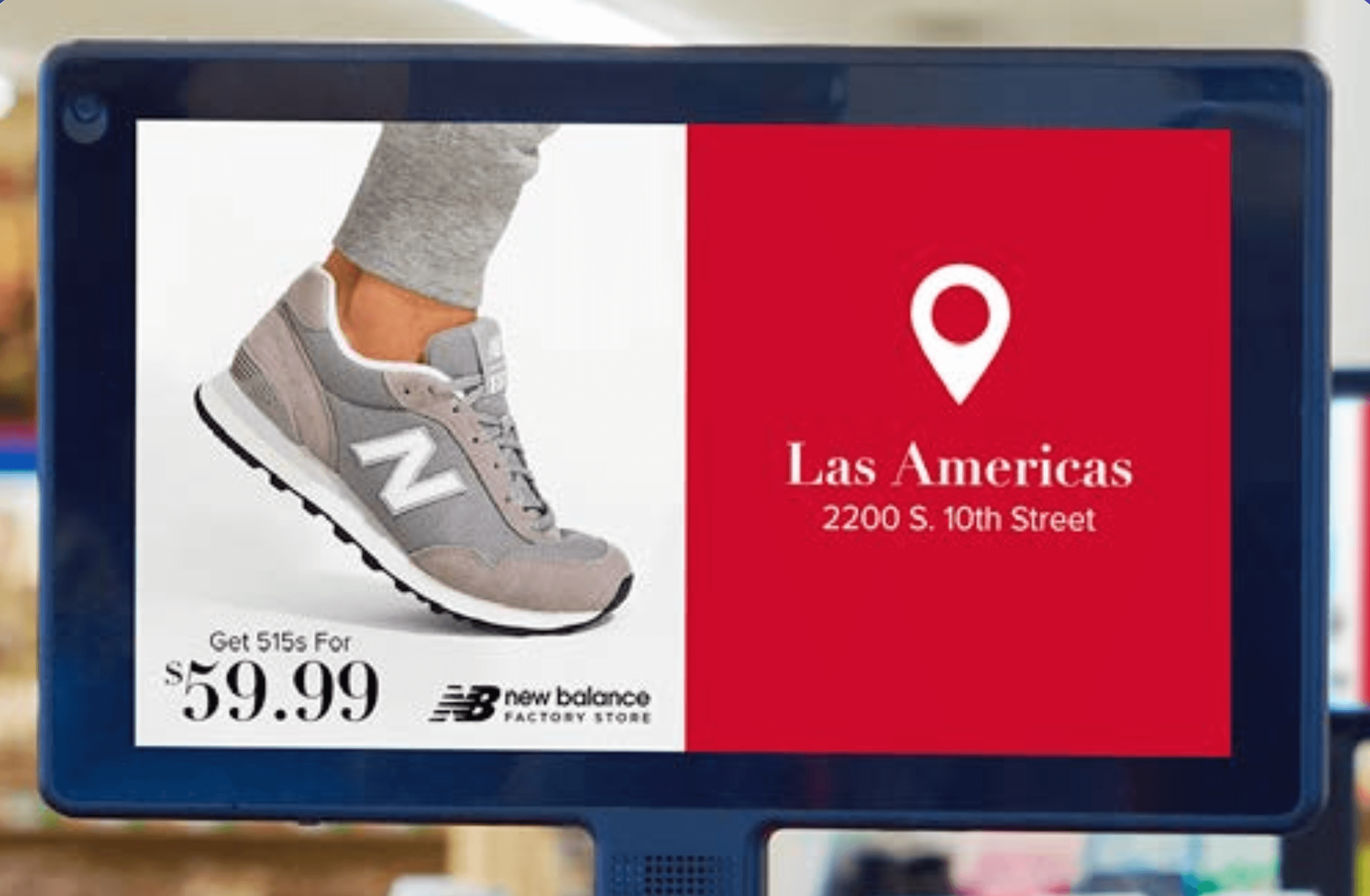
CTV (Connected TV)
CTV advertising is another great way to drive traffic to your store. Even more when you use contextual targeting or geotargeting. On average, CTV advertising combined with location-based targeting drives up to 25% of incremental in-store foot traffic.
The better you know your audience and use targeting efficiently, the more you’ll drive traffic to your store.
Take for example Carl’s Jr., an American fast-food restaurant chain. They realised a 35% lift in incremental visits and a 152% in incremental sales thanks to CTV advertising (source: marketingdive). To achieve these results, they analysed their audience and focused on shared characteristics and interests between their persona and CTV users.
Remember that the number of CTV householders is increasing drastically each year. Don’t miss your opportunity to attract customers to your store!
Mobile interscrollers
Using mobile ID or geofencing, retailers may use mobile interscroller ads to target consumers in Drive to Store marketing campaigns.
This is the best ad format on mobiles in terms of users’ time of attention (3.3 seconds on average), so inviting mobile users to visit a near shop through interscroller ads is a great idea! Include a store locator map and chances of visits within the day will increase.
For example, a pizza restaurant owner could target mobile IDs using food delivery apps, like Uber Eats or DoorDash, and would offer a free slice of tiramisu to all customers eating on-site and showing a specific code. Customers would have got this code by clicking on the interscroller ad.
Display
Display ads can be used with retargeting or again, proximity to a store, to drive traffic to a store.
When using this type of ad, we recommend including a map within your banner, so users will be more tempted to visit the store.
For example, Verizon used a 300×250 MPU to direct potential customers to the nearest shop, based on their location.
In-store beacons
In-store beacons are Bluetooth devices that can send messages to mobile phones within a certain range, like within a shopping mall or a store. It’s a great way to bring customers to your store or to encourage them to buy something.
But know that several conditions must be met for it to work:
- Customers must have activated Bluetooth on their mobile phones.
- They must have downloaded a first- or third-party app.
- They must be within a specific distance from the beacons.
Audio ads
You can also use audio ads for your Drive to Store campaigns.
Target potential customers through local radio stations or through bigger audio platforms such as Spotify. For example, the Spotify Ad Studio offers postal code and interest targeting, which can help you boost awareness and drive foot traffic to one of your stores.
With Drive to Store marketing, customised strategies have no limits.
Footfall attribution
To measure Drive to Store campaigns performance, footfall attribution is one of the most used KPIs.
Basically, footfall attribution measures how many customers visit a store after hearing or seeing an ad.
There are various ways to collect this data:
- Advanced CCTV systems
- Infrared sensors
- Electronic counting devices at the entrance of the store
- Wi-Fi tracking (how many Wi-Fi signals are sent from your phone)
- Mobile foot printing (when a user interacts with a location-based service (GPS, Wi-Fi))
- Geolocation
- In-store beacons
- Brand lift studies
- Coupon scans (users could be invited to scan a coupon to enter a draw when in the store)
- Mobile ID
- Survey
We recommend an attribution window of at least 15-30 days because “5.1%-14.6% of total visits can occur up to 30 days after the end of a campaign” (source thedrum.com).
For Drive to Store campaigns targeting users who are near your store (with CTV, DOOH, Audio, for example), view-through attribution, also called post-view attribution, will help you estimate how many people visited your store after hearing or seeing an ad of yours. For example, if you deliver an audio ad at 10 a.m., you could compare how many customers visited your store between 10 and 11 a.m. that day vs the past week during the same time.
You can also measure the success of a Drive to Store campaign by splitting customers into two groups: exposed vs non-exposed. And then track how many customers go to Shop A (the exposed group) vs how many go to Shop B (non-exposed group). This is possible using DMA, geofencing, and knowing what the average number of customers is for each store.
Deepen your knowledge to succeed
Because Drive to Store marketing offers so many different options and strategies, we recommend you get more familiar with targeting options and KPIs before diving into the DTS world.
One way is to join a Programmatic Course, available online and anytime. Or you can ask a marketing consultant such as Ted Jordan for help.
Setting up your Drive to Store campaign is not all: knowing how to gather performance data and how to analyse it is crucial.
Learn how to unlock the power of data now.


